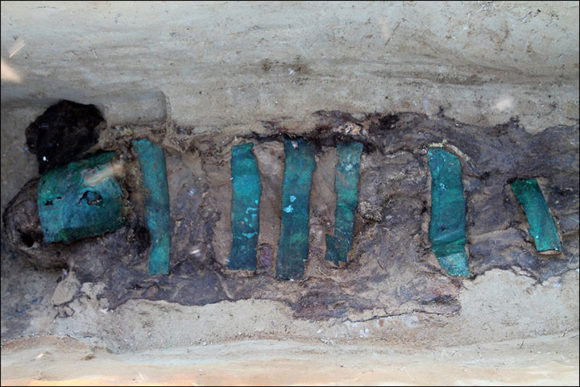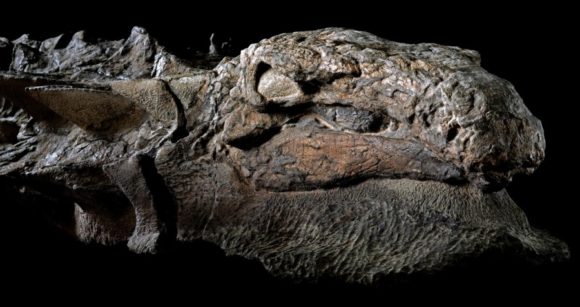“How the creature could remain so intact is still something of a mystery…”
Mummy buffs, rejoice!
First, The Siberian Beauty. Second, the dinosaur mummy. Wait, did we just type the words “dinosaur mummy?” Yes, yes we did….
From The Siberian Times,
Meet the mummified Polar beauty, her long eyelashes and hair still intact after 900 years
By Anna Liesowska
Unearthed on the edge of the Arctic, she is the only woman so far found in an otherwise all-male necropolis, buried in a cocoon of copper and fur.
“This haunting 12th century woman is a member of an unknown hunting and fishing civilisation that held sway in the far north of Siberia – with surprising links to Persia.
Accidentally mummified and probably aged around 35, her delicate features are visible, the green tinge on her face being the traces of the pieces of a copper kettle that helped preserve her in her permafrost grave.
She has long eyelashes, a full head of hair – and impressive teeth.
Bronze temple rings were found close to her skull, wrapped inside animal skin – possibly reindeer – and birch bark that cocooned her.
Like other human remains, the medieval mummy’s feet were turned towards nearby Gorny Poluy River, a fact seen as having religious significance. She was around 155 centimetres tall – 5ft 1 inch…”
For the rest, and so many interesting photos, click here.
NOW, THE DINOSAUR MUMMY. Yes…
From ATI,
Dinosaur ‘Mummy’ Unveiled With Skin And Guts Intact
By John Kuroski
This isn’t merely a fossil, but an actual dinosaur itself, frozen in time.
You can’t even see its bones, yet scientists are hailing it as perhaps the best-preserved dinosaur specimen ever unearthed. That’s because, 110 million years later, those bones remain covered by the creature’s intact skin and armor.
Indeed, the Royal Tyrrell Museum of Palaeontology in Alberta, Canada recently unveiled a dinosaur so well-preserved that many have taken to calling it not a fossil, but an honest-to-goodness “dinosaur mummy.”
With the creature’s skin, armor, and even some of its guts intact, researchers are astounded at its nearly unprecedented level of preservation.
“We don’t just have a skeleton,” Caleb Brown, a researcher at the Royal Tyrrell Museum, told National Geographic. “We have a dinosaur as it would have been.”
When this dinosaur — a member of a new species named nodosaur — was alive, it was an enormous four-legged herbivore protected by a spiky, plated armor and weighing in at approximately 3,000 pounds.
Today, the mummified nodosaur is so intact that it still weighs 2,500 pounds.
How the creature could remain so intact is still something of a mystery…”
For the rest, click here.
Share




